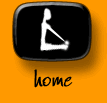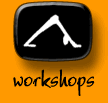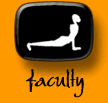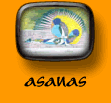

 |
 |
 |
 |
 |
 |
|
DOWNDOG | EAGLE | COBRA | HERO | HALF MOON | CORPSE | GATE
TRIANGLE | PEACOCK | LOCUST | COBBLER | SHOULDER STAND HEADSTAND | BRIDGE | CAMEL | COW FACE | UP BOW | INVERTED STAFF SEATED WIDE ANGLE | HEAD TO KNEE | TORTOISE | DANCER NOOSE  |
| Setu Bandhasana ~ Bridge Building Pose Images by Nancy Van Kanegan Begin by lying on your back, bending your knees and bringing the heels under the knees with your feet parallel and hips-width apart. Wriggle from side to side and roll the shoulders under to flatten out the shoulder blades, taking care to keep the shoulders square and not pulled down toward your hips. Extend the arms alongside the torso, palms down. Tilt the pelvis slightly forward to hollow the groins and get a slight arch in your lower back. With an inhale lift the hips up a bit and stretch your tailbone toward your heels. Press down into the front of the heels and begin to stretch your knees toward the wall in front of you as you lift the thighs. Keep the energy moving forward from the upper palette (the energy center for this pose) through the knees and tailbone as you lift the hips higher. Make sure the knees don't splay out and that you don't press the back of the neck down, losing its natural arch. In the initial stage (dwi pada pitha) stop when you've built a diagonal platform from the knees to the shoulders, with the knees higher than the pubic bone, the pubic bone higher than the navel, and the navel higher than the sternum. Take 5-8 deep, smooth breaths, then lower the hips down. If that felt good, do it again, this time perhaps stretching your arms overhead, shoulder width apart and palms up, or with elbows bent and in line with the shoulders, forearms perpendicular to the upper arms. These variations help to open the shoulders and collarbones. If you'd like to go further, start like before, then begin to lift the chest up and toward the chin as you raise the hips higher. This will start to create a bridge-like arch in the back. Again, hold 5-8 breaths, then lower the hips. To intensify the back-bending work, once you go up to the initial stage you can lift the heels and walk the feet back or walk the shoulders forward a bit. Keeping the shoulders rolled under, interlace your fingers behind your back and press the hands down into the floor, or simply grab the ankles. Press the shoulders, arms and inner feet down as you lift into a higher arch, trying to bring the pubic bone and navel level with each other. So you don't overarch the back, stretch into this backbend by bringing the sternum toward your chin as you take the shins forward. Lower after several breaths. If this is comfortable, you can go a little deeper by supporting the back with your hands, thereby deepening the stretch on the abdomen and upper back. To do this, lift up to the previous stage, then shift your weight to the left side, bend the right elbow, and bring the hand underneath the right hip, with the fingers out to the side. Then shift to the right and bring the left hand to the left hip. You may have to lift up on you toes to create enough height to do this. Keep the elbows working toward each other as you press the shoulders and feet down. If this is easy, bring the hands from the hips to the lower back, with the fingers up toward the hips. Breathe into the stretch, keeping the energy moving forward and up. If you want more work (go easy - this can be hard on the lower back and sacral joints) lift one knee and extend the foot toward the sky. Then switch. Come back to the pose, then lower and rest. To go to the final stage, come to the position where your hands are supporting the lower back. Begin to straighten the legs by inching them forward one at a time and pressing strongly into the inner feet. Eventually you'll bring the feet and legs together. To come out, walk the feet back a bit, remove the hands, and lower down. An alternative way to get into the final stage is from shoulderstand (see description for this asana). Keeping your hands on your back, drop one leg toward your face as you lower the other one forward, bending the knee and placing the foot on the floor. Then lower the other leg. (You can lower both legs at a time, if you prefer.) Lift up on the toes, stretch the hips and spine forward, and, if necessary, reposition the hands and elbows for good alignment. Then lower the heels and stretch one leg forward at a time, as above. To keep the knees from splaying out and to stretch the inner thighs more as you practice the initial stages of setu bandhasana, place a block between the thighs and hug it as you go into the pose. Similarly, if the shoulders splay out too much, you can place a strap around the arms above the elbows When you're done building your bridge, you may want to do a counter-stretch for the lower back, such as tucking the thighs toward your chest. Dropping the knees to one side, then the other, in a simple reclining twist also helps release the lower back and hips. As a counter-stretch for the neck and upper chest, you may want to do some version of fish pose (hips and head down, heart up). When everything feels comfortable, lie back and enjoy the connections you have built between your feet and your head, your lower spine and upper spine, the mundane world and the sacred. (For more on setu bandhasana, see the excellent Asana Workshop article by Sandra Anderson in the February/March 1998 issue of Yoga International.) Text by Tim
Noworyta |
||
|
E-mail: info@yogamind.com | Return Home :: mindfully designed by braddon.com :: |